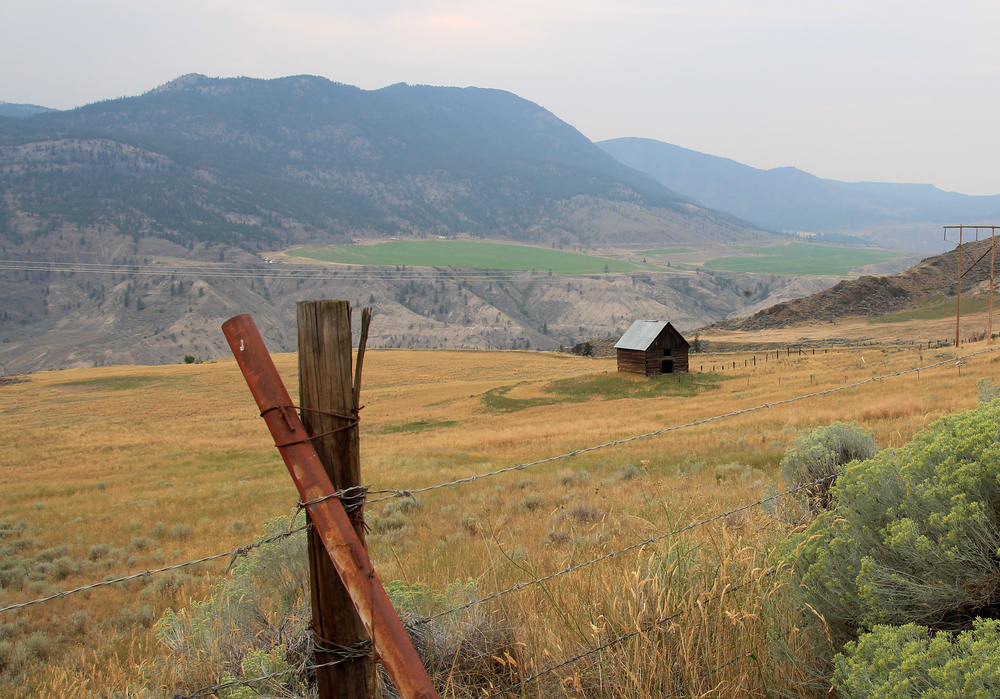When British Columbians think of where their local food comes from, the Lower Fraser Valley and the Okanagan usually come to mind. Lillooet wants locals to know it also has a lot to offer.
Now, a lauded agricultural plan for the Squamish-Lillooet Regional District’s Area B — which includes the District of Lillooet and St’at’imc traditional territory — is charting a new future for local food and land use in the region, thanks to new branding, education, and sustainability goals.
The plan, adopted two years ago after 18 months of consultations, brought stakeholders together to set out the future of agriculture land use in the region and make it easier to grow and sell food locally.
Though getting local food to local people sounds easy, there are several challenges. Popular items can sell out, despite demand. And local farmers have to compete with imported produce from agribusiness giants, usually at lower prices.
“There’s never been an agricultural food plan [like Area B’s] that’s involved the municipalities, the regional district, and the Indigenous Peoples of the area, so that was a big plus,” said Mickey Macri, director of the region’s Area B.
In October, the region’s collaborative approach to the plan earned them the 2016 Real Estate Foundation of BC’s Land Award for the public sector.
A non-profit called the Lillooet Agriculture and Food Society was incorporated this March to carry out the plan’s goals.
The society’s executive director, Curtis Cook, hopes that more people will realize Lillooet is one of B.C.’s “great agricultural regions.”
One of Lillooet’s early claims to fame was its tomatoes, he said.
But when the resource industries of mining and forestry came to town, Lillooet’s agricultural sector diminished.
Now, mining and forestry have diminished, and most of Lillooet’s fertile agricultural land and rangelands remain available for agriculture and ranching.
And with education and workshops, there’s hope that landowners will unlock the full potential of their agricultural land, Cook said.
“For example, there is strong interest [from farmers] in learning about soil amendment and managing invasive plant species,” Cook said. “At the same time, individuals who understand the growing and processing side may need additional help with the business side, such as financial management of their farm or marketing their products to new customers or markets.”
Another challenge the plan hopes to tackle is letting local retailers know what people in their community want.
“If people are not asking for more local products beyond that which may be available at the local farmers’ market, retailers may not be motivated to find them and stock them,” Cook said. “Retailers may simply stick to traditional ordering systems from big suppliers.”
And if producers aren’t informed about what the popular products are, there won’t be enough to sell even when the retailers come calling.
The society aims to provide a clearer picture of the local food system and supply chain so that the “guesswork” for parties is gone, Cook explained.
For Chief Kevin Whitney of the T’it’q’et, one of the six St’at’imc communities that helped with the plan, the local economy was a key interest.
He hopes employment opportunities made possible by the plan will help the St’at’imc communities, as unemployment is high within the population.
“We will use this experience, and the relationships we built with the regional district, to continue to pursue our goals of economic development and governance in the St’át’imc territory,” said chief Whitney in a release.
The plan recognizes that the St’at’imc have an “inseparable connection” to their land and states a need for agricultural opportunities to be developed in consideration of St’at’imc cultural priorities.
Also detailed in the plan are goals for water conservation, helping farmers create environmental farm plans, and encouraging agri-tourism through initiatives like farm tours.
“I’m hoping that people realize we have cattle here, we have alfalfa here, and we even have hogs,” said Area B director Macri. “We’ve diversified from the years and years of what you couldn’t do on the land.”
Macri adds that Area B is not very big, at about 3,500 square kilometres, the second smallest of the region’s four areas.
But there’s hope that the quality of its agricultural land will put Lillooet on the map when it comes to fresh B.C. food.
The Tyee has been a media sponsor for the Real Estate Foundation Land Awards Gala for the last three years. This article is part of an advertising and promotions package. ![]()
Read more: Food
This article is part of a Tyee Presents initiative. Tyee Presents is the special sponsored content section within The Tyee where we highlight contests, events and other initiatives that are either put on by us or by our select partners. The Tyee does not and cannot vouch for or endorse products advertised on The Tyee. We choose our partners carefully and consciously, to fit with The Tyee’s reputation as B.C.’s Home for News, Culture and Solutions. Learn more about Tyee Presents here.
















Tyee Commenting Guidelines
Comments that violate guidelines risk being deleted, and violations may result in a temporary or permanent user ban. Maintain the spirit of good conversation to stay in the discussion.
*Please note The Tyee is not a forum for spreading misinformation about COVID-19, denying its existence or minimizing its risk to public health.
Do:
Do not: